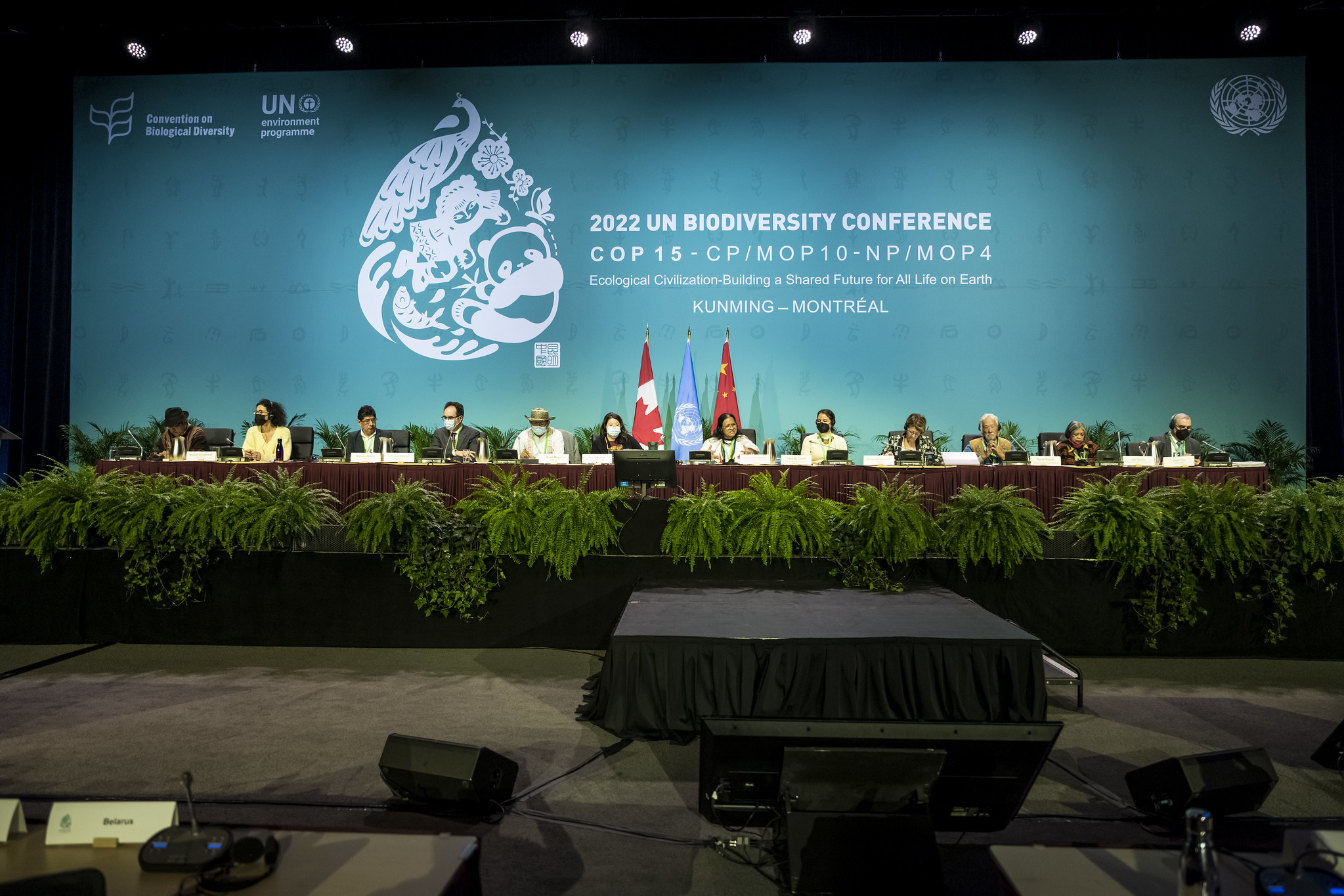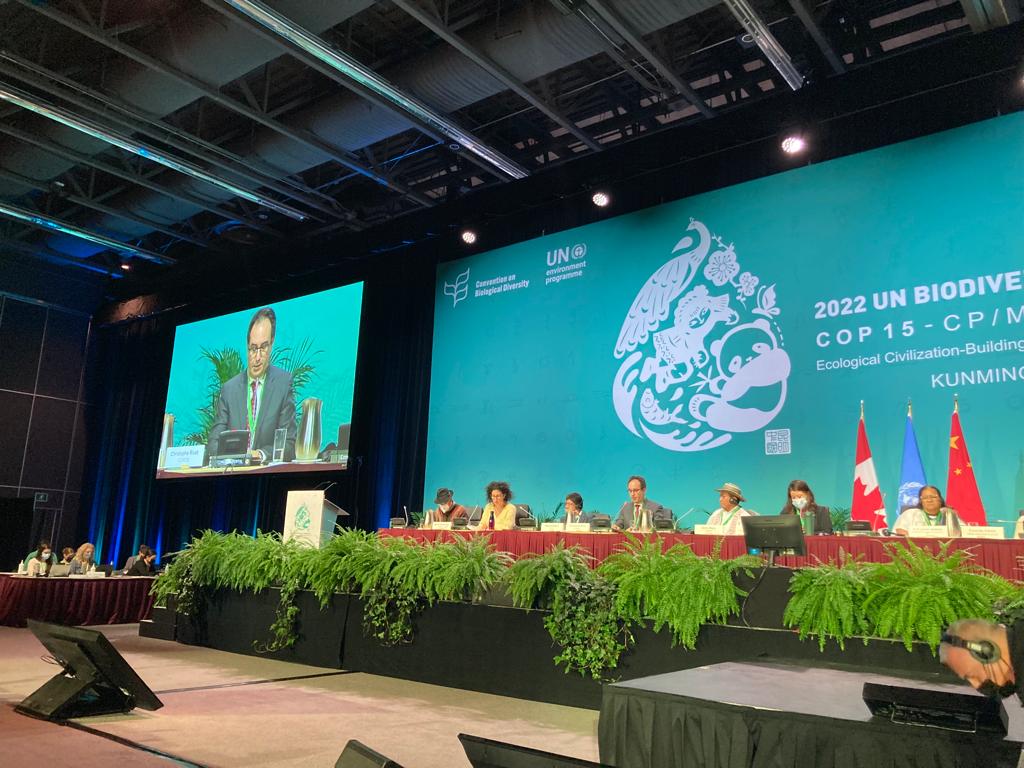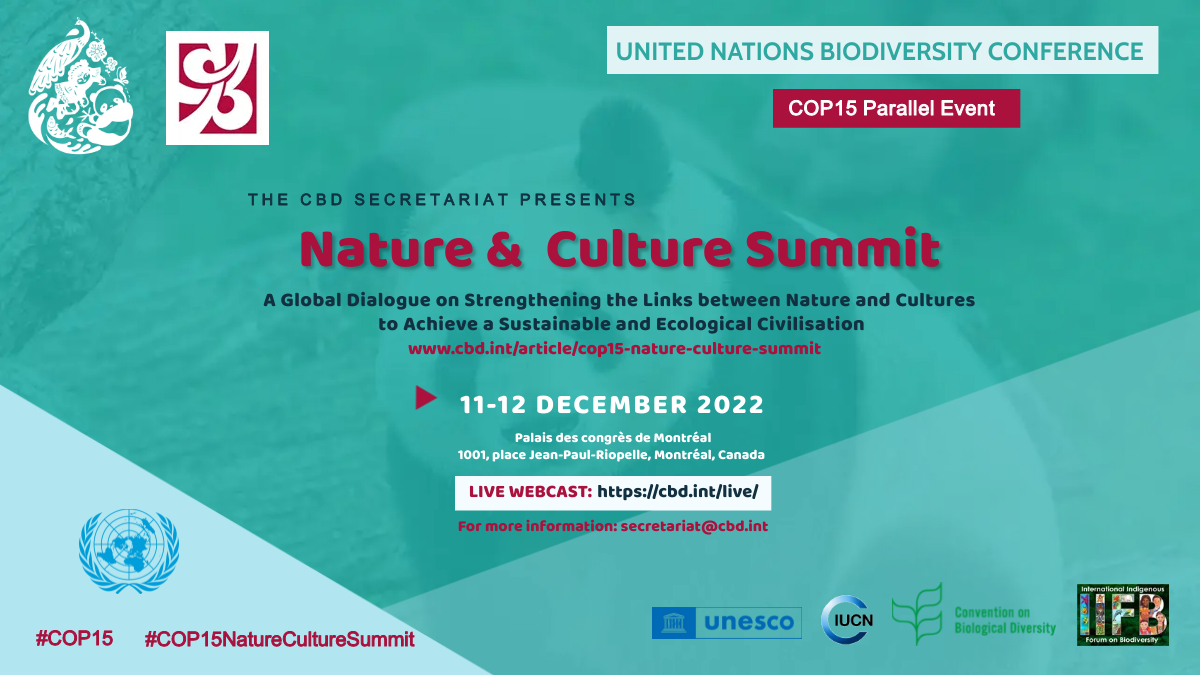ICOMOS at COP15 / Nature & Culture Summit
ICOMOS attended the Nature & Culture Summit of COP15 and was represented by Christophe RIVET, President of ICOMOS Canada, at the high-level panel on Dec. 11, 2022.
The panel outlined the connections of nature and culture and how these linkages can support the implementation of the post-2020 global biodiversity framework.
Read the full contribution of Christophe RIVET below: Ms. Meriem Bouamrane, Chief of Section, MAB Research and Policy: Ecology and Biodiversity, UNESCO:
Ms. Meriem Bouamrane, Chief of Section, MAB Research and Policy: Ecology and Biodiversity, UNESCO:
How can we maintain our way of life while conserving nature and culture?
Dr. Christophe Rivet, President, ICOMOS Canada:
I want to thank first and foremost Elder Patton for hosting us on mohawk traditional territory. It is important to remind ourselves at every opportunity that this is the case, we are hosted by someone. This gives us the perspective to look at the challenges that we're facing with the hope that we can work together. In terms of ICOMOS, the question that you've raised has been at the heart of our work for a few years now. We've had the opportuniyt to work with IUCN, whom I wish to thank for the oportunity for us to be here today. On matters that highlight the connection between culture and nature, we had a number of initiatives looking at how new designations, new ways of managing space and places that are of heritage importance, how those could be better defined. We've been involved in the work of IPCC as recently as a few months ago, highlighting the importance of measuring the impacts of climate change on human populations and their culture. We've set up an international working group on Indigenous Heritage because we understand that this particular relationship - as Professeur Suzuki [Dr. David Suzuki, Scientist and Co-Founder of the David Suzuki Foundation] just highlighted - the knowledge that is in the hands, in the heart, in the minds, in the soul of indigenous peopole around the world is incredibly precious for humanity as a whole to be able to take on. We've been involved in climate heritage matters as well with various United Nations agencies. My fellow panelist Mr. Mejira [Chairperson of the UN Permanent Forum on Indigenous Issues] highlighted the issue of rights and how critical it is to recognise that when it comes to protecting heritage - cultural and natural - it is fundamentally a matter of rights. Finally, we've had an awards programme that highlights the relationship between nature and culture, we've awarded funds and grants to organisations in Guatemala, [Burkina Faso] to pursue measures to protect both cultural and natural heritage.
But my point here is really the fact that when it comes to cultural diversity and biodiversity, they are indissociable, they cannot be dissociated and this - [we western] (I am including myself in that definition) people may have forgotten that relationship. It was there. We have evidence through archeology, through history that the relationship between an understanding of one's environment and cultural expression was core. It was inspiration for art, for language - it shaped language - , it was inspirational for social interactions and, really, fundamentally, we are talking about many cases of kinship between animals and peoples. So, what I do want to put particular emphasis on - and again Professor Suzuki highlighted that very very important fact - the majority of our population on this planet now lives in cities. So there is a high risk of disconnect between what happens to the environment and what is essential for the survival of not just earth but ourselves as a species. This is where cultural heritage conservation becomes a really important partner. We're a new partner. This is a new relationship that we are forging with the environmental groups. It's one where we see this line between nature and culture being blurred. And it's time that it should be blurred. It should remain that way. [Heritage conservation] offers solutions : [we've] advocated for decades to promote the maintenance of existing buildings, existing places which leaves to less destruction, less destruction of habitats and just as recently as a few weeks ago a number of governments here in Canada have decided to compromise green areas, protected areas, in order to push for new housing. This is not a sustainable strategy. And we, in heritage conservation, can offer tools to address the need not to destroy habitats. We've also advocated for the use of fewer materials and fewer resources. Why? Because we emphasise again using what exists and adapting. This is particularly critical in a world where we are measuring carbon emissions.
So, what I do want to put particular emphasis on - and again Professor Suzuki highlighted that very very important fact - the majority of our population on this planet now lives in cities. So there is a high risk of disconnect between what happens to the environment and what is essential for the survival of not just earth but ourselves as a species. This is where cultural heritage conservation becomes a really important partner. We're a new partner. This is a new relationship that we are forging with the environmental groups. It's one where we see this line between nature and culture being blurred. And it's time that it should be blurred. It should remain that way. [Heritage conservation] offers solutions : [we've] advocated for decades to promote the maintenance of existing buildings, existing places which leaves to less destruction, less destruction of habitats and just as recently as a few weeks ago a number of governments here in Canada have decided to compromise green areas, protected areas, in order to push for new housing. This is not a sustainable strategy. And we, in heritage conservation, can offer tools to address the need not to destroy habitats. We've also advocated for the use of fewer materials and fewer resources. Why? Because we emphasise again using what exists and adapting. This is particularly critical in a world where we are measuring carbon emissions.
Finally, [I would like to hightlight] the fact that our world population is urbanised - we need to focus on that reality to really address the impact. This is about consumption. It's about needs like housing. It's about needs like green spaces. It's about needs like food. We cannot tackle this challenge without understanding that we have to establish those relationships between people and the environment. And the heritage sector, cultural and natural is now at a crossroads where we fundamentally need to work together. This is a really rare experience where we can bring different forms of knowledge, traditional, indigenous, scientifc, from the cultural [and] the natural. This is where, to answer your question, I think those partnerships and those different set of tools allow us to address these very difficult challenges.
See also![]() Watch the full panel on YouTube
Watch the full panel on YouTube![]() Working Group on Indigenous Heritage
Working Group on Indigenous Heritage![]() Working Group on Climate Change
Working Group on Climate Change![]() Culture Nature Page
Culture Nature Page
